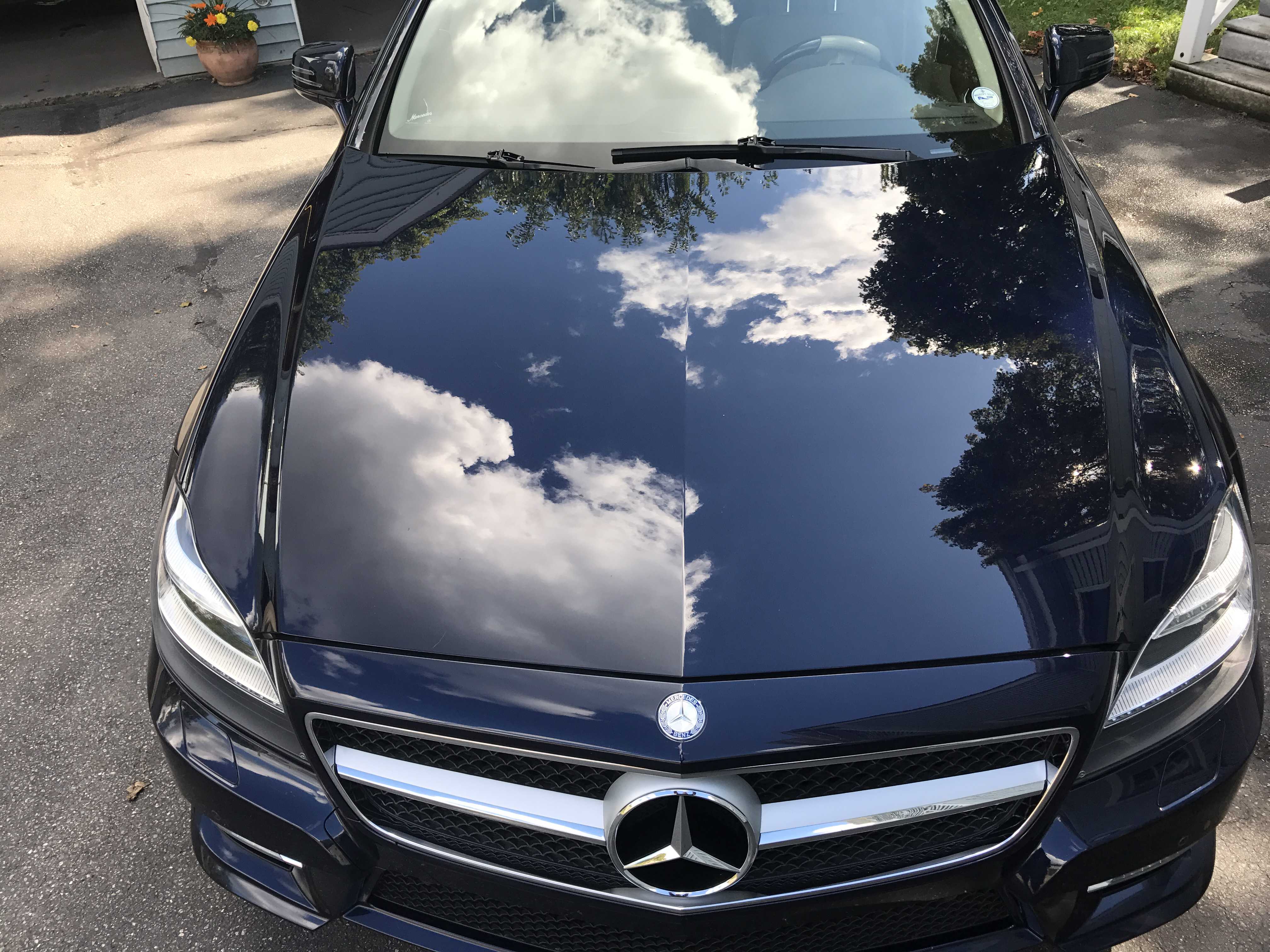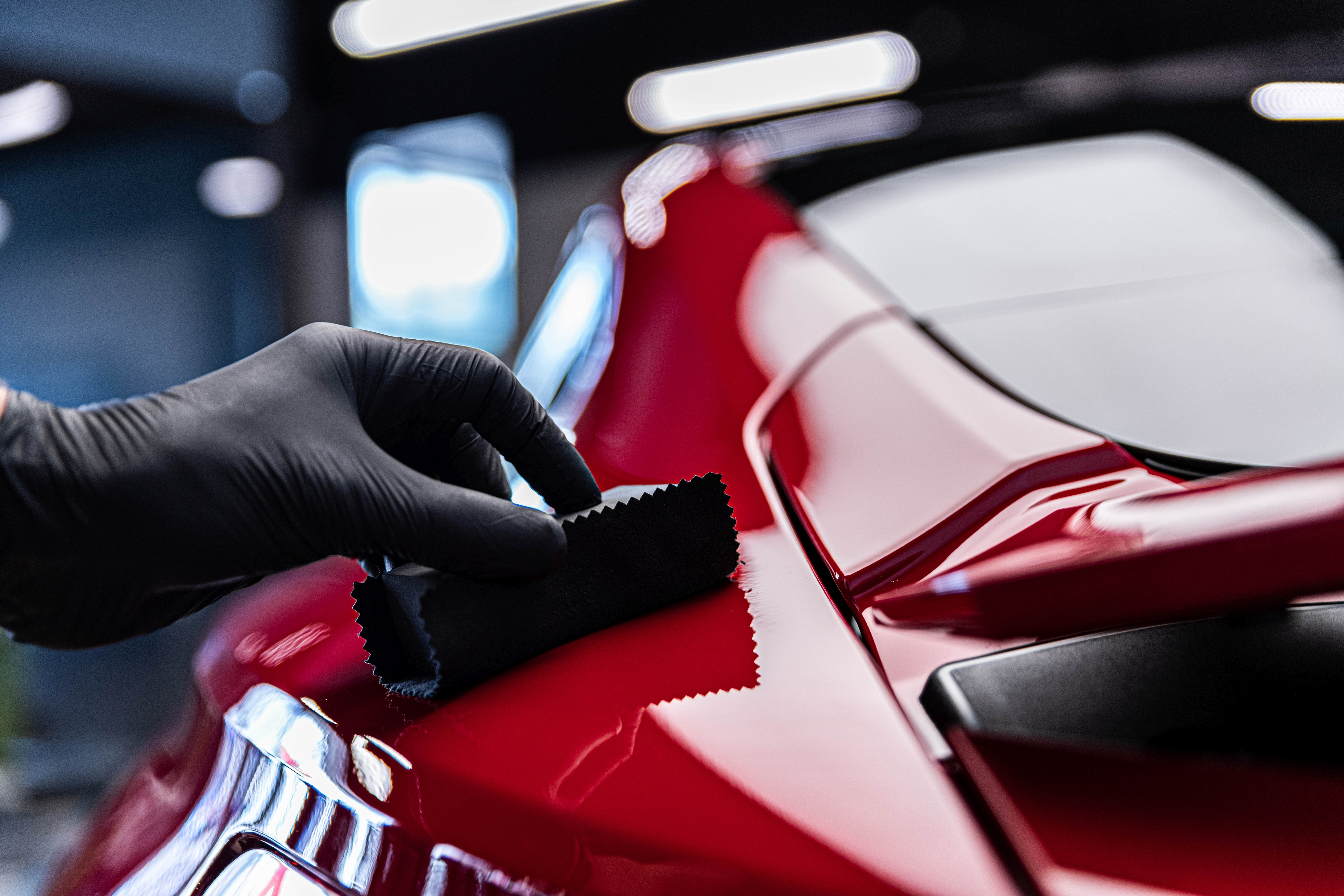Twelve reasons why drivers choose Ceramic Coating Newark
Exploring the Science Behind Car Ceramic Coating and Its Safety Residences
The scientific research of car ceramic coating presents an interesting research study in sophisticated auto security. Made up largely of silicon dioxide and polymers, these layers form a durable bond with lorry paint. This communication boosts durability against environmental risks while providing hydrophobic advantages. The details of how these layers job and their lasting advantages remain less comprehended. Ceramic Coating Newark. Unboxing these details reveals why ceramic finishes are coming to be a recommended selection for car care
What Is Ceramic Coating?
Ceramic coating is a fluid polymer that chemically bonds to the surface of a vehicle's paint. This innovative safety layer boosts durability and offers remarkable resistance to environmental factors. Unlike standard wax or sealants, which provide short-lived defense, ceramic coverings develop a long-lasting guard that can withstand harsh conditions such as UV rays, acidic pollutants, and severe climate. When used appropriately, the coating forms a hydrophobic surface area, creating water to bead and slide off, which helps in keeping the car's tidiness. Furthermore, it provides boosted gloss and deepness to the paint, making the car appear even more polished and vivid. The application process normally entails complete surface preparation, including cleaning and sprucing up, to guarantee peak bonding. Therefore, ceramic coverings are ending up being progressively popular among car enthusiasts and those looking for to protect their financial investments, promising to preserve the car's aesthetic charm while lowering the regularity of maintenance.
The Make-up of Ceramic Coatings
The intricate formula of ceramic coatings mostly contains silicon dioxide (SiO2), which is originated from natural sources like quartz and sand. This key component gives the structure for the coating's sturdiness and safety high qualities. In addition to SiO2, ceramic coverings frequently include various polymers and additives that improve bond, flexibility, and resistance to environmental elements. These substances function synergistically to create a robust obstacle against pollutants such as dirt, chemicals, and UV rays.Furthermore, some solutions integrate titanium dioxide (TiO2) or various other nanomaterials, which can enhance the coating's hydrophobic buildings, leading to better water repellency. The precise composition can differ greatly among producers, impacting performance and durability. Ultimately, the combination of these elements culminates in a safety layer that not only improves the aesthetic allure of lorries yet additionally offers to extend their life expectancy by protecting the surface area from prospective damage.
How Ceramic Coatings Job
Recognizing just how ceramic layers work entails exploring their chemical make-up, which contributes to their safety top qualities. The application procedure is necessary for accomplishing optimal results, while longevity and resilience factors figure out the coating's effectiveness with time. With each other, these elements highlight the benefits and efficiency of ceramic coatings for lorry defense.
Chemical Make-up Explained
While numerous car proprietors look for resilient protection for their cars, the chemical structure of ceramic coverings plays an important role in their performance. These finishings primarily contain silicon dioxide (SiO2), which is derived from all-natural minerals. This compound creates a strong bond with the automobile's paint, creating a durable, safety layer. Additionally, several ceramic finishings have titanium dioxide (TiO2), improving their hydrophobic residential properties and resistance to UV rays. The presence of polysiloxanes can further improve flexibility and longevity. Together, these components add to the coating's capacity to repel water, dirt, and contaminants, while also offering a high-gloss coating. Understanding this chemical foundation aids car owners value the durable protection used by ceramic finishings.
Application Refine Overview
Applying ceramic finishings entails a meticulous procedure that guarantees suitable bonding and defense for the vehicle's surface. Extensive cleansing and purification of the content car's outside are carried out to remove dust, crud, and previous waxes. This step verifies that the surface is cost-free from impurities that could hinder adhesion. Following this, the paint is typically brightened to enhance clarity and get rid of any kind of blemishes. As soon as prepared, the ceramic coating is used in tiny areas making use of an applicator pad, enabling consistent protection. The coating is then left to heal, creating a solid chemical bond with the surface. Appropriate curing times and conditions are important, as they confirm the coating achieves its optimum performance and safety top qualities.
Longevity and Durability Factors
Ceramic coatings are made to offer durable security via their innovative chemical composition, which produces a robust barrier versus environmental impurities. The resilience of these layers is affected by variables such as the density of the application, the quality of the product, and the conditions under which the vehicle is exposed. Top quality ceramic coatings can last numerous years, withstanding scrapes, UV rays, and chemical discolorations. Appropriate upkeep, including regular cleaning and periodic reapplication, can better enhance long life. Furthermore, environmental aspects like climate and direct exposure to contaminants can influence the life-span of the coating. In general, when used and kept properly, ceramic finishings supply phenomenal sturdiness, making them a popular option for car fanatics seeking to maintain their car's look.
Hydrophobic Qualities and Water Repellency
Hydrophobic properties are a hallmark of high quality car ceramic coverings, significantly boosting the vehicle's surface efficiency. These coatings produce a molecular bond with the car's paint, causing a surface that wards off water successfully. When water enters into contact with a ceramic-coated surface area, it grains up and rolls off, minimizing the amount of liquid that stays on the paint. This habits not just adds to a cosmetically pleasing appearance but also decreases the buildup of pollutants such as dust, crud, and roadway salts.The boosted water repellency leads to simpler cleaning and maintenance, as less effort is called for to get rid of undesirable compounds. Furthermore, the hydrophobic nature of ceramic finishings aids in avoiding water places, which can mar the coating of uncoated surface areas. On the whole, the incorporation of hydrophobic residential properties in ceramic finishings plays a crucial role in maintaining the lorry's pristine appearance while streamlining upkeep.
Protection Versus Scratches and UV Damage
Car ceramic helpful hints finishes supply considerable security against scratches and UV damages. The scrape resistance system creates a resilient layer that soaks up impacts, while the UV protecting advantages aid preserve the vehicle's paint honesty over time. With each other, these functions contribute to a longer-lasting and visually attractive surface.
Scratch Resistance Device
Using advanced modern technology, ceramic coatings give a robust shield versus scratches and UV damages, improving the longevity and look of car surface areas. The scrape resistance mechanism of these layers is credited to their unique molecular framework, which develops a durable bond with the automobile's paint. This bond creates a hard, safety layer that can absorb influences and withstand abrasions. In addition, the smooth surface of the coating lowers friction, making it hard for impurities to stick and create scrapes. The chemical composition of ceramic layers commonly consists of nanoparticles that reinforce the safety layer, further enhancing its strength. Automobiles treated with ceramic finishes exhibit considerably enhanced scratch resistance contrasted to conventional wax or sealers, making certain an immaculate coating over time.
UV Protecting Perks
The safety high qualities of ceramic finishes prolong beyond scratch resistance to include significant UV securing advantages. These layers create a durable obstacle that shows dangerous ultraviolet rays, securing the automobile's paint and underlying materials. Prolonged direct exposure to UV radiation can bring about fading, oxidation, and wear and tear of the paint finish. By including ceramic layers, automobile owners can efficiently minimize these dangers, protecting the aesthetic charm and stability of their vehicles. Furthermore, the UV blocking residential properties add to improved durability, minimizing the frequency of repainting and maintenance. Eventually, the integration of ceramic finishes supplies a thorough option for securing automobiles from the destructive effects of sun exposure, ensuring a continual, lively look over time.
The Durability and Upkeep of Ceramic Coatings

Regularly Asked Questions
Can Porcelain Coating Be Applied to Any Kind Of Lorry?
Ceramic coating can be applied to numerous sorts of automobiles, consisting of cars and trucks, trucks, and motorcycles. Surface area preparation and compatibility with particular materials are necessary for suitable bond and efficiency of the coating.
Just How Much Does Ceramic Coating Commonly Expense?
Ceramic coating commonly sets you back between $500 and $2,000, depending on variables such as lorry size, coating quality, and expert application. The financial investment can provide durable protection and boost the car's look over time.

Is Specialist Application Necessary for Finest Outcomes?
The need of professional application often depends upon preferred results. Professionals typically guarantee correct surface area prep work and application methods, bring about suitable bonding and durability of the coating, which may be challenging for inexperienced people to accomplish.
Can Porcelain Coatings Be Gotten Rid Of or Repaired?
Ceramic finishes can be gotten rid of or repaired, though the process may require particular solvents or techniques - Ceramic Coating Newark. Correct removal is important to avoid damages to the underlying surface, highlighting the importance Go Here of expert help for suitable results
Exactly How Does Porcelain Coating Compare to Conventional Wax?
The comparison between ceramic coating and standard wax discloses that ceramic finishes provide exceptional durability, improved protection versus ecological pollutants, and longer-lasting shine, while wax calls for more frequent application and offers much less overall resistance to damage.